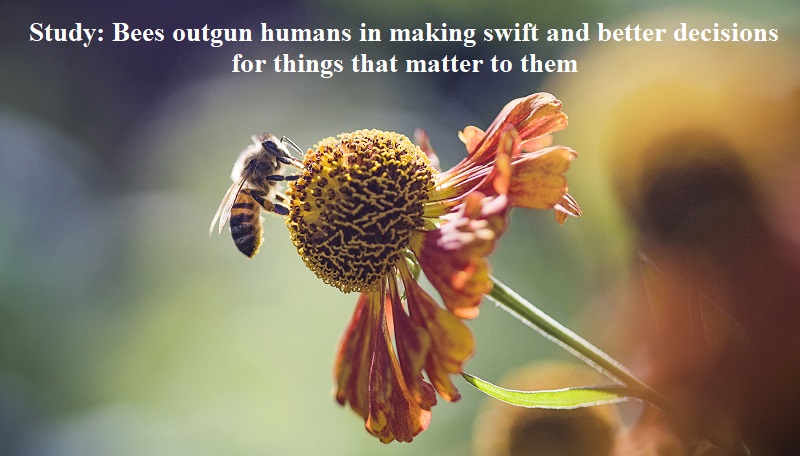
Step into the captivating world of bees, where these small yet remarkable creatures excel at making quick and informed decisions about matters that are important to them, surpassing humans in the process.
Surprisingly, recent research published in the journal eLife reveals that honey bees, with brains smaller than sesame seeds, are capable of making decisions faster and more accurately than humans. This study provides insights into honey bees’ decision-making processes, shedding light on insect brains, the evolution of our own brains, and the design of more efficient robots. Over millions of years, honey bees have evolved to effectively assess the effort, risk, and reward associated with foraging for their hive.
The study, led by Professor Andrew Barron from Macquarie University and Dr. HaDi MaBouDi, Neville Dearden, and Professor James Marshall from the University of Sheffield, delves into the cognitive processes involved in decision-making.
Professor Barron emphasizes the importance of decision-making in cognition, explaining that animals constantly face decisions in their lives. He states, “Decision-making is at the core of cognition. It’s the result of an evaluation of possible outcomes, and animal lives are full of decisions. A honey bee has a brain smaller than a sesame seed, and yet she can make decisions faster and more accurately than we can.”
He further notes that if a robot were to perform tasks equivalent to those of a honey bee, it would require the computational power of a supercomputer.
Honey bees encounter the challenge of efficiently collecting nectar and defending against predators while simultaneously making decisions about which flowers are likely to contain food.
In the study, 20 bees were trained to recognize five different colored flower disks. Blue flowers always held sugar syrup, green flowers contained quinine with a bitter taste for bees, and other colors sometimes contained glucose.
The researchers then observed the bees in a garden where the flowers only contained distilled water. Over 40 hours of video footage was analyzed to track the bees’ flight paths and measure the time it took for them to make decisions.
Dr. MaBouDi explains that the bees displayed rapid decision-making when they were confident that a flower held food, taking an average of 0.6 seconds to land on such flowers.
Similarly, if they were confident that a flower did not have food, they made a quick decision. However, if they were uncertain, they took longer (an average of 1.4 seconds), with the decision time reflecting the likelihood of a flower containing food.
Based on the observed principles of bee decision-making, the researchers developed a computer model that remarkably resembled the physical structure of a bee brain. Professor Marshall highlights how complex autonomous decision-making can be achieved using minimal neural circuitry.

Post Your Comments